Did you know that Big Pharma uses financial incentives to get doctors and institutions to prescribe their drugs more frequently? This practice has been going on behind the scenes for decades, but a spotlight is being shone on the problem over the past few years.
It’s been a minute since I was a junior doctor and drug reps invited me and my colleagues to drug dinners. We would sit there and listen to a dry discussion on why Losec was better than Zantac for acid reflux. But then we’d be wined and dined to make up for it. It beat hospital food. And the next morning, I did always wonder which drug was better for a hangover and overindulging on too much rich food.
Looking back now, it’s clear that this process was all a part of the indoctrination of doctors into believing in the eminence of Big Pharma. No matter how many advanced paediatric life support courses I attended where it was drilled into me that to save lives, you always start out using natural therapies, it wasn’t until 2010 that I was able to start divesting myself of my blind faith in Big Pharma.
Advanced Life Support is state-of-the-art. Are you sure it uses natural modalities first and foremost? That seems unlikely.
Yes. I’m absolutely certain that advanced life support algorithms focus on natural therapies. The way doctors save lives is by following those principles to the letter. Literally.
A stands for airway (oxygen and cervical spine stabilisation), B stands for breathing (and mechanical ventilation), C stands for circulation (so you give iv saline and/or blood products. Hopefully, you don’t need to do chest compressions, but sometimes these are necessary).
You can read the paediatric advanced life support algorithms for yourself if you don’t believe me. But there aren’t many drugs recommended. On the other hand, there are plenty of nutrients and hormones. And several of the drugs used are based on herbal remedies or derived from nutrients.

Patients are consumers of what is usually a profit-driven business. In a conflict of interests, doctors and institutions are being paid, not only to provide patient care, but also to promote certain drugs, treatments, medical devices and investigations.
There’s abundant evidence that, even when they realise they’re essentially being bribed to change their behaviours (in this case prescribing habits), the majority of doctors believe they can remain objective. But they’re usually wrong.
- Big Pharma’s influence has been proven to alter prescribing patterns.
- Sponsorship by Big Food influences dietary guidelines.
- Lobbying influences political decisions.
Is Big Pharma the best option to manage most modern maladies?
About 85% of chronic illness is believed to be non-communicable. In other words, these days infections account for a minority of illnesses and deaths. Instead, the main causes of chronic ill health and death have shifted from infectious diseases to:
- poor diet and lifestyle,
- stress,
- loneliness,
- sleep deprivation,
- hormonal imbalances,
- and toxic exposures.
Yet, the treatments that doctors usually reach for in the first instance are drugs and procedures. Or they give vague advice about how you need to “lose weight,” “stop smoking,” or “cut down on your alcohol intake”.
Unfortunately, there has been a dearth of training for doctors on the specifics of how to support patients with these goals. I think this is pretty tragic, wouldn’t you agree?
Many people who are overweight or obese already recognise they are, and have been on yo-yo diets most of their adult lives. But after every cycle, they regain all the lost weight and usually more.
Times they are a changing…

The good news is that there is some evidence that the tide is turning. A burgeoning interest in Courses on lifestyle medicine is evidence that a growing number of doctors are dissatisfied with the results their patients are getting with pharmaceuticals.
Awareness is growing that low-fat dietary guidelines, first introduced in the 1970s, have never been backed up by sound science. Not only that, but evidence against them has been stacking up, particularly over the past decade.
In fact in just the last few weeks, another review on dairy fat draws the conclusion that full fat dairy, particularly fermented dairy, is at least as healthy as low fat dairy. Dairy fat actually contains some essential fat-soluble nutrients, like vitamin K2, that have been removed from low fat dairy.
While another review on saturated fat confirms that it was the victim of a smear campaign instigated by a cabal of doctors, nutritionists, heart associations and Big Food who were bent on world domination, not public health improvements.
Big Pharma and Big Food
Dietary guidelines are still written by policy makers entrenched in low fat dogma. And there is little evidence that they consider the full complement of research before creating guidelines.
Worse still, many policy makers have received payments from the food industry, or are even employed by Big Food, as Zoë Harcombe has illustrated for the UK Eatwell guidelines.
It’s easy to see how things can go wrong for patients when there’s a failure:
- to conduct appropriate research before licensing new drugs,
- of regulatory agencies tasked with ensuring medications are safe, and
- of appropriate surveillance to detect adverse reactions after drugs, investigations and devices have come to market .
Big Food and Big Pharma are closely intertwined.
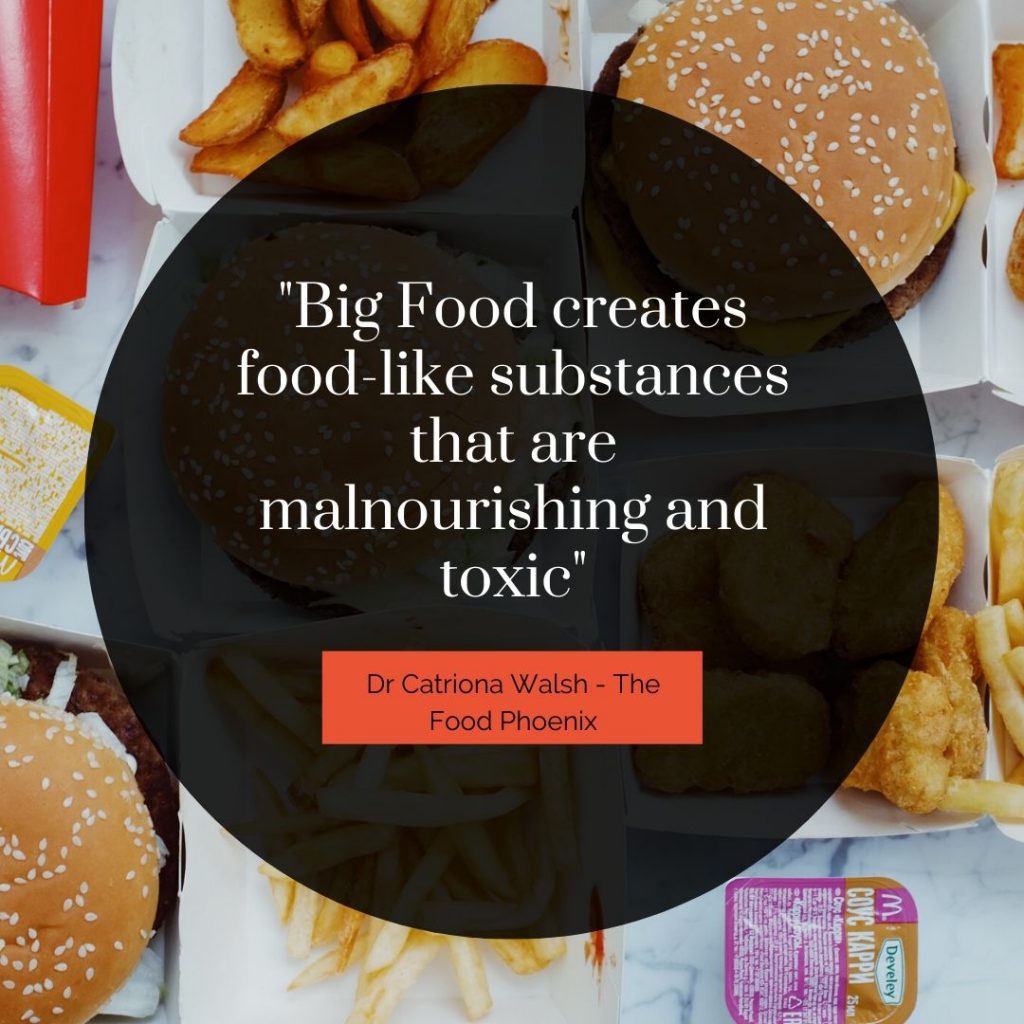
Big Food creates food-like substances that are malnourishing and toxic. Unsurprisingly, people subsisting on this fake almost-food wind up with health problems sooner or later. That’s where Big Pharma step in to clean up with promises they’ll save your life if you comply with the drugs.
But sometimes Big Pharma gets caught causing harm.
Here are a few of examples of when the pharmaceutical industry has harmed patients. One you’ve probably heard of, others you might not have.
Almost everyone has heard of thalidomide, a sedative drug prescribed to many women in the 1950s and 60s during pregnancy to treat morning sickness, but without any checks on how it might affect the foetus. And most people know how it tragically resulted in life altering effects on the babies of these women, characterised by severe limb deformities.
A less well known problem has been the use of gadolinium based contrast agents (GBCAs) for MRI scans.
These have been injected into millions of people of all ages, including pregnant women and babies, without a single high quality long term safety study to assess for negative effects.
Gadolinium is a deadly heavy metal that blocks calcium channels in your cells.
And because they’re toxic to your mitochondria (the little power plants inside your cells that produce practically all the energy you need to stay alive), gadolinium in MRI contrast agents injure your metabolism.
Gadolinium contrast agents are highly inflammatory. Our elimination of them is actually pretty poor, leaving them to bioaccumulate in all of the tissues of our bodies, especially our bones, skin, joints, liver, kidneys, and brains.

Surely gadolinium contrast agents are safe because Big Pharma has bound the gadolinium to a chelating agent. Right?
Gadolinium is bound to experimental contrast agents containing something called DTPA. These drugs containing DTPA also have toxic effects independent of the metabolic poison, gadolinium.
In fact, the use of calcium DTPA is recommended against during pregnancy due to concerns about its toxicity. But DTPA and similar chemicals are used to reduce the toxic effects of the free gadolinium. They may also encourage elimination of gadolinium in your urine following injection.
However, even early studies showed that not all the contrast agents were eliminated following injection into subjects. Leaving a proportion retained long term.
What sort of effects does the scientific literature suggest as a result of this?
Shockingly, no clinical trials were performed to find out.
Even worse is the fact that no studies were done to look at whether patients in renal failure could eliminate these drugs before they were licensed.

It took 20 years to discover that a horrible, intractable, agonisingly painful, often fatal condition does often occur when renal patients are injected with gadolinium contrast agents. This 100% avoidable, devastating illness is characterised by calcification and hardening of all body tissues, including the joints and skin.
Although I like to call it gadolinium-induced petrification syndrome (GIPSy), it’s official name is nephrogenic systemic sclerosis (NSF) or gadolinium-associated systemic fibrosis (GASF).
What causes GIPSy?
The only known cause is gadolinium. And gadolinium based contrast agents injected during MRI scans are the commonest source of gadolinium, since it’s not found in appreciable amounts in real food. Studies show that if you’ve never had a contrast MRI or other scan where you’ve been injected with gadolinium contrast agents, you don’t eliminate significant amounts of gadolinium in your urine. Coz it ain’t in your body.
Who else gets GIPSy?
Renal patients are not the only people complaining of devastating symptoms following 1 or more gadolinium scans: many people with normal renal function are also describing profound and life altering symptoms, but are being dismissed.
Not because there is any scientific evidence that these gadolinium based contrast agents are safe. Quite the contrary. It is now completely indisputable that every person injected with them retains a proportion of gadolinium for the rest of their lives, and that retention is cumulative.
There is also data that many people injected with 1 or more of these contrast agents complain of symptoms which are often very similar to those that renal patients with NSF complain of. If you’re curious about the typical symptoms experienced with gadolinium toxicity, you should check out this article.

What sort of symptoms do you get with GIPSy?
Here are just some of the commonest symptoms that I and many of my clients have experienced after MRI contrasts:
- deep bone, muscle, joint and skin pain,
- joint problems like reduced range of motion, popping, clicking and subluxations (partial dislocations),
- nerve pain, tingling, pins and needles,
- numbness,
- stiffness,
- weakness,
- headaches,
- tinnitus,
- anxiety (I’ve written an in-depth post about the mental health challenges of gadolinium contrasts here),
- digestive problems,
- fatigue,
- brain fog,
- memory issues,
- poor concentration,
- visual disturbances,
- depression,
- new autoimmune diagnoses,
- menstrual problems,
- photosensitivity (burning in the sun much more easily),
- itch, urticaria and histamine intolerance,
- weight loss (both muscle and fat),
- weight gain,
- changes in skin pigmentation (white patches and pigmented patches)
- loose/lax skin that looks and feels thin and has aged rapidly,
- muscle cramps and spasms,
- muscle fasciculations (uncontrollable twitching),
- heart palpitations,
- dizziness on standing and fainting,
- hair loss,
- dry and brittle hair,
- increased thirst and drinking excessive amounts of fluids,
- dehydration,
- fluid retention with puffy legs and lymphedema,
- running to the toilet at night,
- insomnia,
- brittle nails,
- tooth sensitivity and increased cavities,
- high blood pressure (a medical sign, rather than a symptom),
- abnormal blood tests, especially abnormal liver function tests, high cholesterol, high blood sugars (again these are tests rather than symptoms),
- and many other symptoms.
How can I find out more about GIPSy and gadolinium toxicity?
I’ve written more about my own experiences with gadolinium contrast agents here and also here. I’ve also written a free guide to demystify gadolinium toxicity for you.
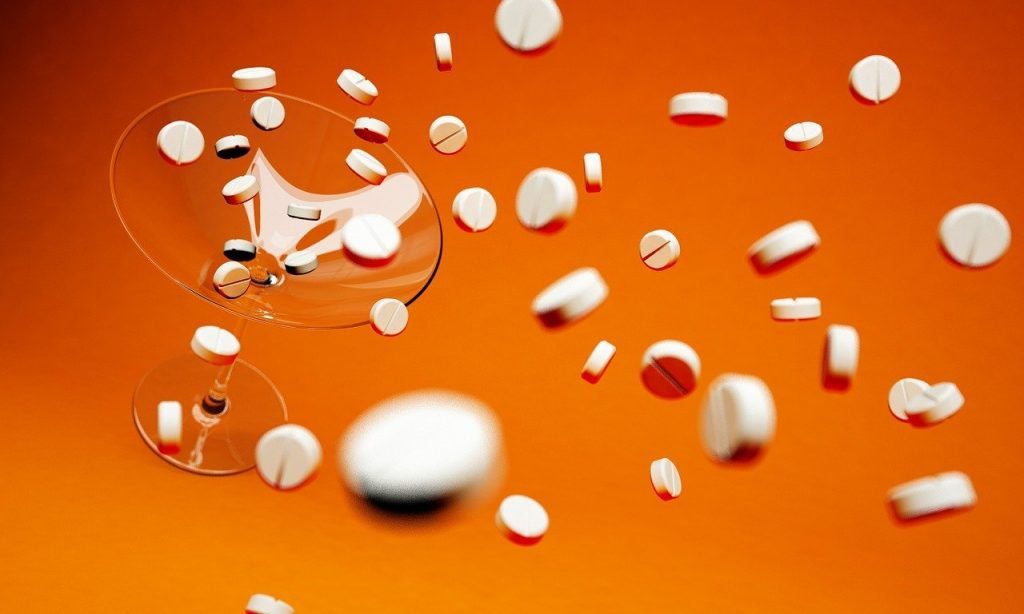
But if you’d like to do a deep dive on gadolinium toxicity, I’ve written an ebook. You can order or find out about Contrasts: More than meets the MRI here.
Response to uncertainties over gadolinium contrast agent safety
In Europe and a few other countries use of some of the least stable of these agents (a class called linear gadolinium based contrast agents) has been stopped or limited.
New study shows MRI contrast agents damage nerve cells
And now a new study on rodents shows that all gadolinium contrast agents for MRI cause something called small fibre neuropathy. Small fibre neuropathy is a type of nerve damage which can cause sensory disturbances, problems with bladder control, constipation, fainting, dry eyes and mouth and even abnormal sweating.
There are 2 main types of contrasts for MRI scans: linear and macrocyclic gadolinium contrast agents. We’d been told by Big Pharma and the FDA that yes, perhaps linear agents could theoretically result in toxicity but definitely not those newer, more expensive, macrocyclic agents. Well, hold your horses. The macrocyclic agents also caused nerve damage.
Anecdotally, quite a few people who’ve suffered from nasty side effects from gadolinium contrast agents have discovered they have small fibre neuropathy. But the number of people who complain of burning pain and have never had any kind of useful test to look for things like small fibre neuropathy or metabolic damage to their mitochondria dwarfs those numbers.
In spite of this, gadolinium contrast agents are being used more than ever. They are still being used all the time in pregnant women and babies, despite the fact that the only research done on pregnant women reveals an increase in stillbirths and neonatal death rates as well as diseases characterised by inflammation of the skin and joints in their kids (again very similar to the tissues most affected in renal patients with GIPSy).
Big Pharma and the Opioid Crisis
These are not the only instances where patients are harmed by prescription medications. The recent “opioid crisis” highlights this as well. In fact prescription drugs are now widely considered to be the third leading cause of death, after heart disease and cancer, in western-style civilisations.
Big Pharma and Mental Health

Did you ever hear about Study 329? Not sure? Let me refresh your memory.
Study 329 was a clinical trial of antidepressants to treat depression in adolescents. The original study was published in 2001 and the authors (read Big Pharma, specifically SmithKline Beecham, now GSK) claimed that Paxil (paroxetine, a type of selective serotonin reuptake inhibitor antidepressant) was “generally well tolerated and effective” in treating major depression in adolescents.
Over the next few years, Paxil was handed out like smarties to depressed American teens. But many families found that their experiences didn’t match with what Big Pharma claimed. That’s putting it mildly. Many adolescents started self-harming and having suicidal thoughts after starting on Paxil. Scary? More like petrifying. Russian roulette with your kids!
So in 2015 Study 329 was reanalysed by the BMJ under its RIAT protocol. RIAT stands for “restoring invisible and abandoned trials.”
What did the RIAT of Study 329 show?
The restorative authors got their hands on all the original trial data and reanalysed it. They found that neither paroxetine nor imipramine (a tricyclic antidepressant) were any better than placebo at treating depression in the adolescents. So not remotely effective.
More worryingly, they uncovered “serious, severe, and suicide related adverse events” that the original publication had hidden.
Big Pharma Corruption
Pharmaceutical companies view Covid-19 as a once-in-a-lifetime business opportunity
Gerald Posner, author of "Pharma: Greed, Lies, and the Poisoning of America" Tweet
Incidentally, GSK had to pay a $3 billion fine for bribing doctors and mis-selling Paxil and Wellbutrin, as well as hiding safety data for the diabetes drug, Avandia, in 2012 in the largest case of healthcare fraud in US history.
The same year, GSK turnover was £26.4 billion. This had increased to $33.8 billion by 2019. Their total operating profit in 2012 was $7.4 billion. So they could easily afford to pay the fine and still make an enormous profit.
Get your FREE Stress management Programme

I know how horrible chronic anxiety and depression are because I’ve been there. That’s why I’m gifting you a free course to help you make mindset changes that will help you work through stress, anxiety and depression. Get access to it when you sign up for my newsletter.
How have we reached a point where the most appropriate treatment options, the safest investigations, and the most evidence-based diets are seldom discussed with patients in detail, if at all? Because you’ll never guess what. Adolescents aren’t the only ones who do badly with antidepressants. People of all ages experience some horrible side effects from them. More about that later.
Could it be as simple as following the money?
Here’s a little known fact that most doctors and patients aren’t aware of: there have been plenty of cases in the scientific literature where people’s severe chronic illnesses have been put into remission by diet and lifestyle.
Radical schizophrenia remission with real food, not drugs

Take the case of an 82-year-old woman with chronic paranoid schizophrenia since 17 years of age. She’d been medicated for decades, wasn’t able to look after herself, was obese and depressed. Obviously, she’d had prescription after prescription of antipsychotic medications. In the end, she’d received over 10 different psychotropic drugs (some of them by injection) with all of their side effects. Yet she was still paranoid, having hallucinations and had been in and out of hospital for treatment for her mental health numerous times.
Then at the age of 70 years old and weighing 330 pounds, she was started on a ketogenic diet for weight loss. Low and behold, within 2 weeks she started to notice improvements in her psychiatric symptoms.
Over the next few months, her weight fell away and as it did so did her psychosis. She was able to come off her medications completely and entered into full remission. For the first time in adulthood, she felt normal, happy and could live a typical life.
12 years later, she was still in remission, 150 pounds lighter, loving life and looking after herself at home.
The rule, not the exception

You might be thinking that she’s a one-off. Think again. She’s not. There are loads of equally miraculous recoveries of people with schizophrenia, depression, Alzheimer’s and other mental health disorders using the ketogenic diet, carnivore diet, autoimmune protocol, and even only eating real food.
And the recoveries don’t stop with psychiatric conditions. Diabetes, autoimmune conditions, allergies, degenerative conditions, severe menstrual problems, chronic fatigue, hormonal imbalances, osteoarthritis, acne and plenty of other common, chronic conditions also respond to the right diet and lifestyle changes.
Quite clearly, medications are much less efficacious than the right diet and lifestyle changes for reversing many chronic diseases. To find out what you can do to start reversing a chronic illness, check out this post.
Big Pharma wants you sick
Medications make Big Pharma a fortune. When you’re a patient for life, you’re a customer for life.
And in 2019, Big Pharma was worth about $1.25 trillion worldwide. That’s almost 5 times more than there are stars in the Milky Way. Which is more money than my little brain can cope with.
Another way to put it is that in 2019 there were 7.7 billion people on earth. So for every single living man, woman and child, Big Pharma received about $162. Most people in the world weren’t customers of Big Pharma in that period, much as Big Pharma would have loved that. So Big Pharma actually received far more from a proportion of its customers.
Or put another way, if Big Pharma were a country, it would have the 16th biggest GDP in the world. Which is an obscene amount of money.
Prescription medication sales alone are expected to reach $1.18 trillion in 2024.
That is to say before lockdown and COVID-19, Big Pharma was expected to rake in $1.18 trillion in 2024.
Can Big Pharma profit from the COVID crisis and lockdown?
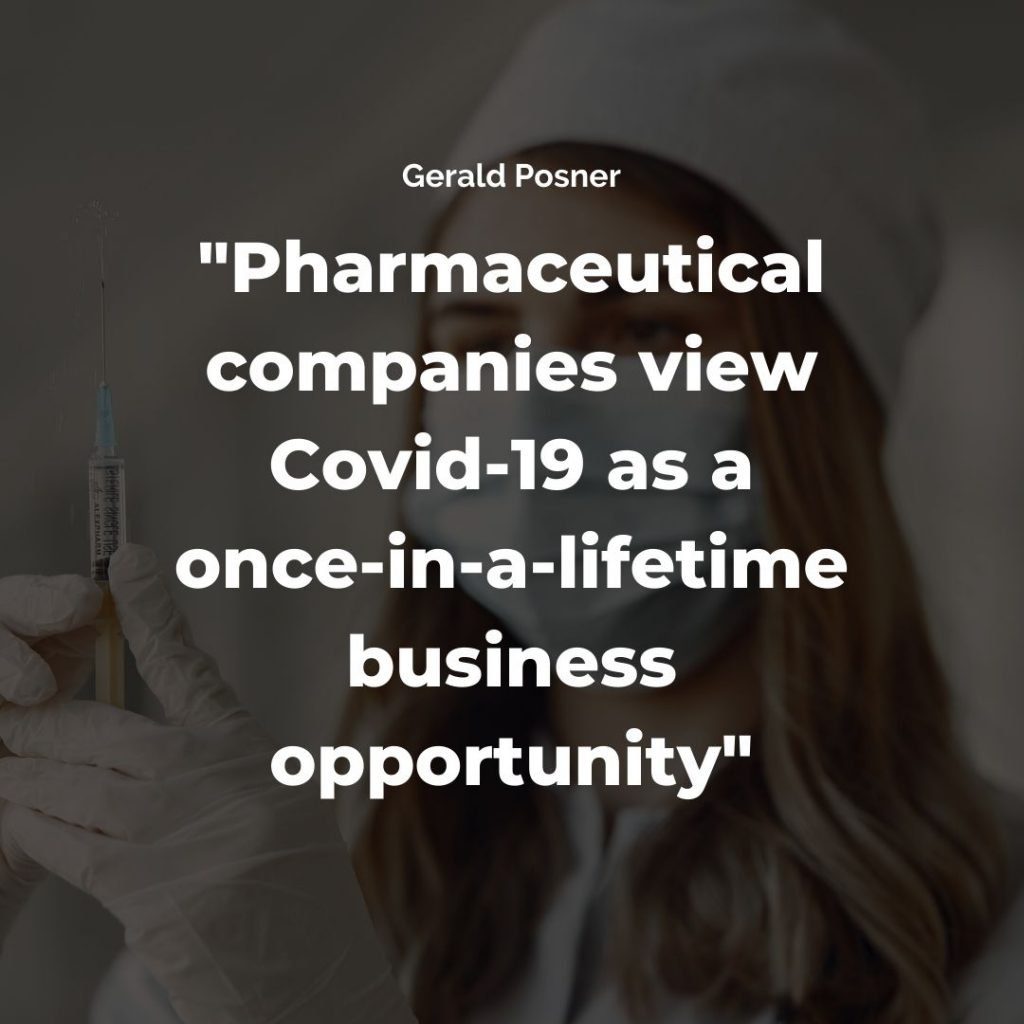
But then, Covid-19 created widespread hysteria and anxiety. This was coupled with an inevitable global recession with its associated losses of businesses and jobs. Then you have to add in the big spikes in obesity and insulin resistance from the quarantine 15 — people eating their feelings and drinking away their sorrow, boredom and stress.
Now all bets are off. If anything, early evidence for increased prescribing of antidepressants, sleeping tablets, and blood pressure drugs means that Big Pharma is one of the few industries laughing all the way to the bank. And that’s before we even factor in the rush on any coronavirus vaccines which will come out. Plus it looks very much like a coronavirus vaccine would require at least 2 or 3 shots per person.
How’s that for a business model?
According to Gerald Posner, “Pharmaceutical companies view Covid-19 as a once-in-a-lifetime business opportunity.” Posner authored the book “Pharma: Greed, Lies, and the Poisoning of America.” He added, COVID-19 “will potentially be a blockbuster for the industry in terms of sales and profits…the worse the pandemic gets, the higher their eventual profit.”
And Big Pharma is the gift that keeps on giving… to Big Pharma.
Let’s face it, when your initial medication turns out to not only be a turkey but cause side effects, your doctor is much more likely to add in a second and third drug to treat the underlying disease… and then to manage all the side effects of those medications.
Many of the drugs being prescribed are used to manage “abnormal” test results like high cholesterol or high blood pressure rather than to help patients feel healthier, happier, or live better lives.
Meanwhile, Big Pharma tells us that these drugs save lives. But do they really?
When schizophrenia steals 20 years or more off your life expectancy and research shows that many psychotropic drugs cause, worsen or hasten the onset of many chronic illnesses (including cancer and heart disease), do you still trust Big Pharma to help you out? Especially when they want to sell you the treatment for the illnesses they’ve caused?
But that’s not the only problem with psychotropic medications. Another side effect that very few people are aware of is that many of them increase cravings and addictive behaviours. I only found out about this side effect recently from working with a few clients who are determined to change their diets and lifestyles, but are being confounded by cravings for sweet treats and alcohol.
Big Food and Big Pharma: a seductive combo
So I delved into the literature but also anecdotal reports from psychiatric patients and psychiatrists. What I discovered astounded me at first. But then after I’d had a chance to reflect on it, the cravings made perfect sense. When you start on antidepressants, they numb you emotionally. They don’t just take away the painful emotions. SSRIs and other antidepressants can make many people feel empty. Some have even described themselves as feeling like a numb zombie on antidepressants. Bye-bye, pleasure. Your reward systems are disturbed by the drugs. What would you do to start feeling pleasure again?
When Big Pharma fuels your addiction, Big Food comes to the rescue with addictive junk foods. I have yet to come across someone whose addiction is to sardines and calf’s liver. Which product does this slogan go with? “Once you pop, you can’t stop.” I’ll give you a clue. It’s not a green juice.
Addictive foods and drinks are always highly inflammatory, put the breaks on your metabolism, and are malnourishing. And they help to create new custom for Big Pharma by contributing to your increasing blood pressure, high cholesterol, and chronic pain.
Antidepressants and weight gain: who's at fault?
Although dependency on high carb junk foods isn’t the only reason antidepressants and other psychotropic medications often lead to weight gain, it is an important one. But where is the published literature from pharmaceutical companies on this particular harm of antidepressants? Mysteriously absent. Yet the weight gain is undeniable. And the blame is often passed to the patient by their doctors for eating too much. Like the guilt and feelings of inadequacy aren’t bad enough for many people labelled with psychiatric illness.
The conclusions of studies like this don’t help doctors be less judgmental. It’s the unhealthy lifestyles that are the problem. And that’s the fault of the patient, not the antidepressant. Or that’s the narrative we’re being spoon-fed, like a big bowl of cookie dough ice cream. While simultaneously being wrapped over the knuckles for having no willpower with the same spoon.
Typical advice: eat less, eat healthier, exercise more, stay on your meds, blah, blah, blah. I mean the proviso to discuss the benefits and risks with your doctor isn’t really going to result in your doctor suggesting you stop the antidepressant if you’re depressed, is it? At least not in most consultations with most doctors.
Moving on. I know I talked about a cabal that demonised saturated fat earlier. This isn’t the only example of research being derailed by a medical cabal.
Is Big Pharma ethical?
The case against science is straightforward: much of the scientific literature, perhaps half, may simply be untrue. Afflicted by studies with small sample sizes, tiny effects, invalid exploratory analyses, and flagrant conflicts of interest, together with an obsession for pursuing fashionable trends of dubious importance, science has taken a turn towards darkness. As one participant put it, “poor methods get results
Richard Horton, editor of the Lancet Tweet
Alzheimer’s research has been set back decades by directing the narrative to reward certain individuals and companies while excluding others from having their ideas heard and taken seriously.
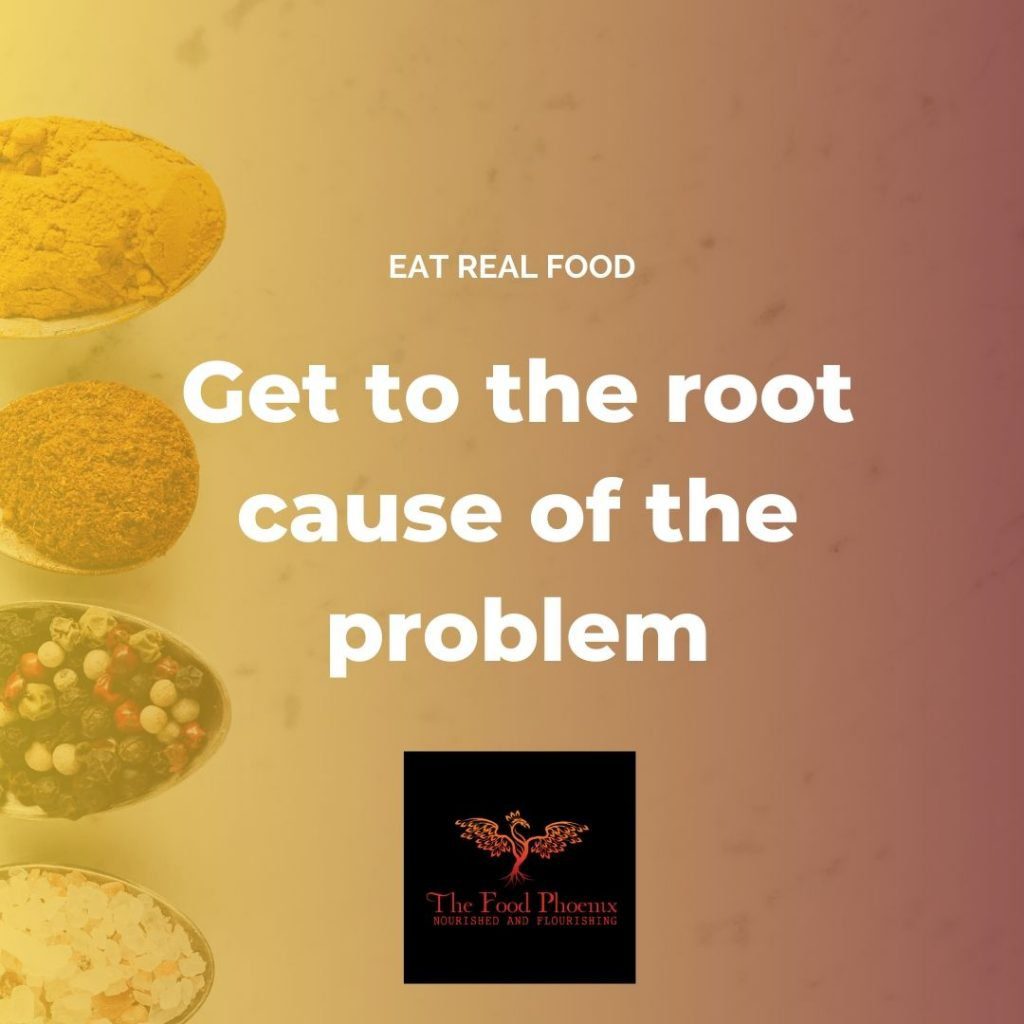
If you have been interested at all in Alzheimer’s research, you’ll have heard that a protein called beta-amyloid is a linchpin in the brain destruction caused by the process. Decades ago, a handful of researchers made beta-amyloid the bogeyman and waged a war against it.
Subsequent research has exposed the fact the brain cells are in distress because of several factors. These include:
- chronic inflammation,
- infection,
- malnutrition,
- hormonal imbalances,
- metabolic damage,
- toxicity,
- and other harmful triggers.
Sick neurones produce amyloid in defence. The amyloid isn’t there to kill your brain cells. The amyloid is there to try to protect them from something else that is doing the damage.
Unfortunately, the people dominating the conversation on Alzheimer’s are the same ones who theorised that amyloid is launching an assault on your brain. They want us to remove it all and stop our brains from making any more of it.
Does Big Pharma create a monopoly?
Journals have devolved into information laundering operations for the pharmaceutical industry,
Richard Horton, editor of the Lancet Tweet
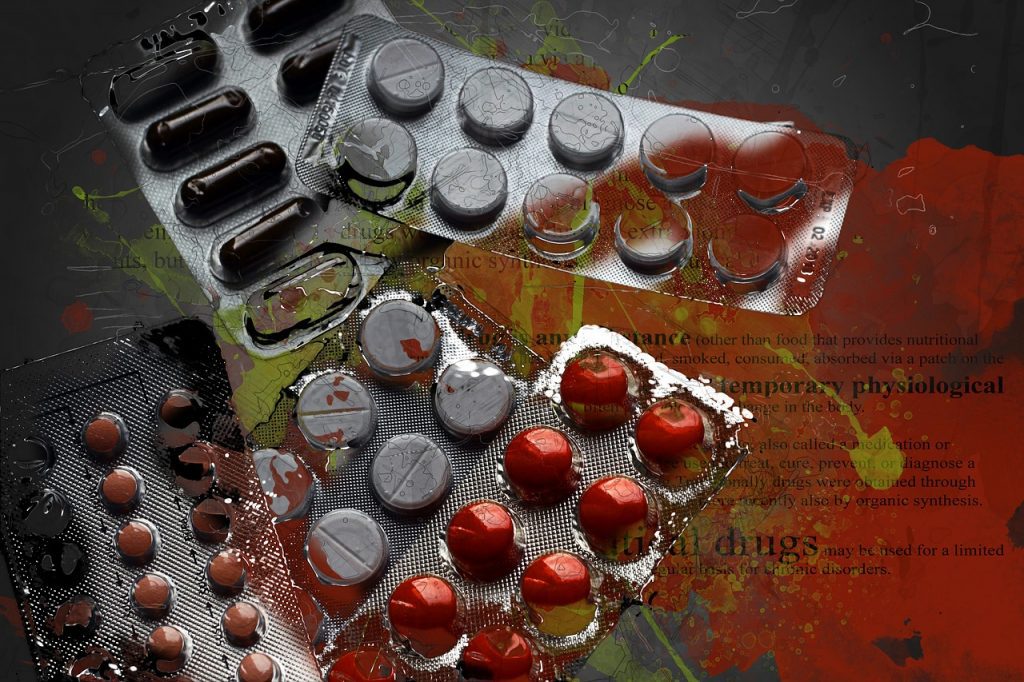
These scientists inveigled their way into influential positions within universities and Big Pharma. This meant they had some control over the purse strings when grant money was being handed out. So no funding for research on alternative theories. While industry would only invest in research and development that backed the amyloid approach.
Peer review panels and editorial boards for illustrious journals became dominated by the amyloid-is-evil brigade. These were places where they were in a position to dictate which research would be published and which wouldn’t. They could even control who got the prestigious speaking slots at international conferences where their ideas could be showcased.
All of us are only human. Common motivations for how we behave revolve around power, prestige, privilege and pay.
It's hard to blame researchers for contributing to Big Pharma's monopoly on healthcare
Imagine being in a prominent position where you’ve worked hard to put out large volumes of research and you’re respected as a leader in your industry. Now imagine some upstart comes along with new research that threatens to question your life’s work. Everything you’ve worked so hard to achieve is on the line. Is it any surprise people become defensive, try to suppress criticism and do whatever they can to control the narrative so it works in their favour?
It’s hard to blame them when there’s no appreciation or thanks for having an interesting theory that later turns out to be wrong. The process of scientific discovery is currently structured to penalise researchers taking risks. There’s a lot of pressure to be productive rather than to uncover the truth and course correct when you’ve taken a wrong turn. Although mistakes and failure are an inevitable, even necessary part of the scientific process, it’s unusual for scientists to be encouraged to own up to theirs.
Consequently, a determined campaign to silence and discredit any competing voices speaking out against amyloid-is-evil was waged by those who stood a lot to lose if the conversation changed.
The light at the end of the tunnel…
Thankfully, in recent years a new paradigm for the treatment of Alzheimer’s called ReCODE, or more commonly the Bredesen Protocol, is showing remarkable improvements in brain function with reversal of early Alzheimer’s in cohorts of patients. It targets individualised diet, lifestyle and supplements to give patients a personalised approach.
Dr Dale Bredesen, who created the protocol, ran into the usual objections which greatly hampered funding into his protocol. So the research itself has been the result of grassroots action by interested clinicians and patients who, along with their families, are willing to give the protocol a shot.
The real advances in healthcare are coming from outside Big Pharma
Dr Terry Wahls is another tenacious clinician and researcher who first reversed her own multiple sclerosis and then somehow managed to get funding for a small pilot study using the exact protocol she used to take her from her tilt-and-recline wheelchair to cycling holidays and hiking.
The results from the early pilot study were so positive, she’s been awarded a grant from the National MS Society to continue her research, despite their earlier decision to ban her from speaking at some of their events for “creating false hope”. Again, grassroots pressure from people with MS on social media who had heard her TEDx Talk and other talks led to the National MS Society making diet and lifestyle a research and programming priority.
Does it make sense to deliberately break your biological pathways with a medication to suppress symptoms?
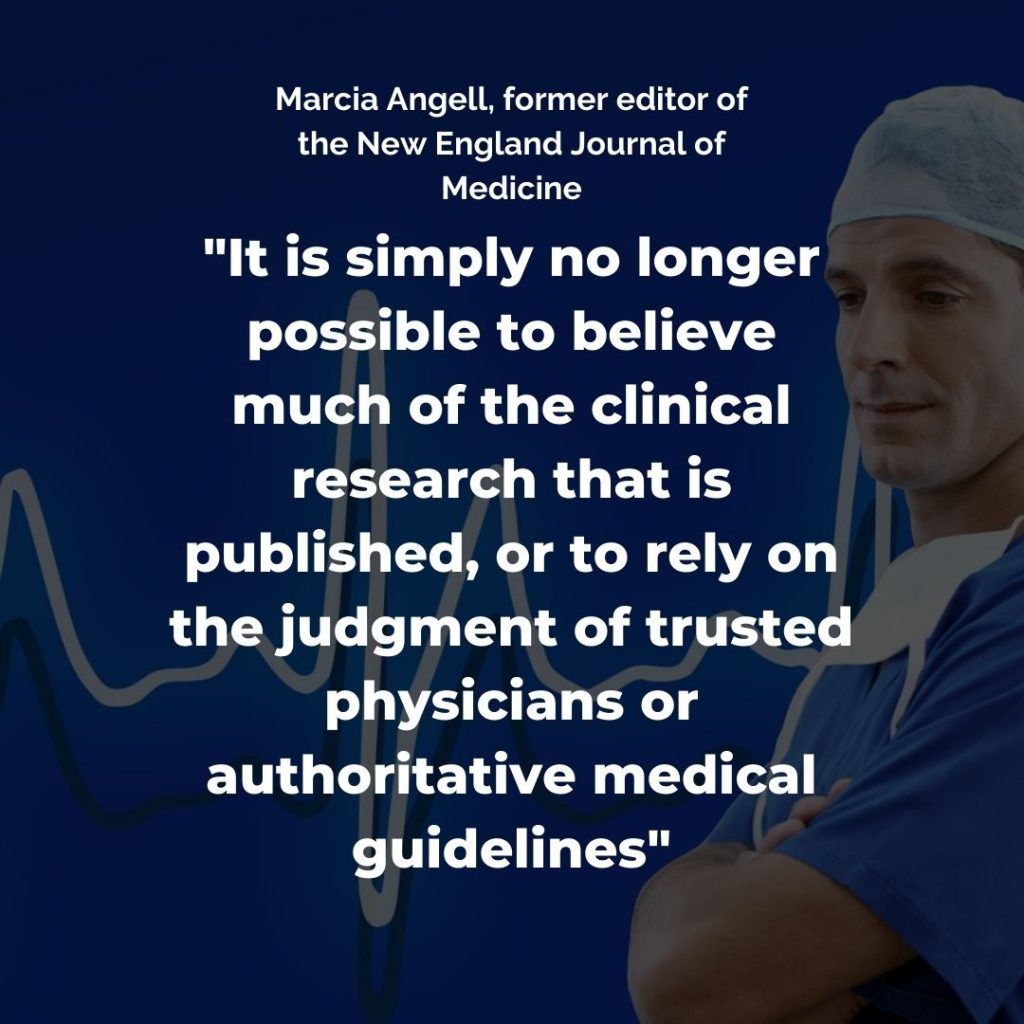
Wouldn’t you prefer to get to the root cause of the problem instead and address it? I know I would.
How Big Pharma deceives you
“It is simply no longer possible to believe much of the clinical research that is published, or to rely on the judgment of trusted physicians or authoritative medical guidelines. I take no pleasure in this conclusion, which I reached slowly and reluctantly over my two decades as editor of The New England Journal of Medicine.”
Marcia Angell, former editor of the New England Journal of Medicine Tweet
You may be thinking that my views on how Big Pharma has co-opted respectable medical science are hysterical. That they’re fringe. Let me share some quotes by the editors of some of the most prestigious journals in the world.
Editor of the Lancet
“Journals have devolved into information laundering operations for the pharmaceutical industry,” according to Richard Horton, editor of the Lancet in 2004. In 2015, he said, “The case against science is straightforward: much of the scientific literature, perhaps half, may simply be untrue. Afflicted by studies with small sample sizes, tiny effects, invalid exploratory analyses, and flagrant conflicts of interest, together with an obsession for pursuing fashionable trends of dubious importance, science has taken a turn towards darkness. As one participant put it, “poor methods get results”.”
Editors of the New England Journal of Medicine
According to Marcia Angell, former editor of the New England Journal of Medicine (NEJM) in 2004, Big Pharma is “primarily a marketing machine” which co-opts “every institution that might stand in its way.” She is also well known for having said, “It is simply no longer possible to believe much of the clinical research that is published, or to rely on the judgment of trusted physicians or authoritative medical guidelines. I take no pleasure in this conclusion, which I reached slowly and reluctantly over my two decades as editor of The New England Journal of Medicine.”
Marcia Angell and her husband Arnold Relman, both former editors of the NEJM, are very vociferous in their criticism of the American medical industry for its ties to Big Pharma. You can listen to them in this interview where they explain their frustrations with the current for-profit model and fears for the future.
Jerome P Kassirer, another NEJM former editor, even wrote a book on the topic, entitled “On The Take: How America’s Complicity with Big Business can Endanger Your Health.” He goes into how Big Pharma bribes doctors and provides grants and funding for learned societies, like the American Thoracic Society, as I mentioned above. But in a lot more detail. Plus he delves into other areas, like how conflicted doctors write treatment guidelines and protocols and testify in front of the FDA in support of a particular drug.
PLoS Medicine editors
When PLoS Medicine was launched in 2004, the editors outlined in their manifesto that, “medical journals have allowed their interests to become aligned with those of the pharmaceutical industry by printing advertisements for drugs, publishing trials designed by drug companies’ marketing departments, and making profits on reprints used as marketing tools.” PLoS Medicine decided to stand for something different and place the focus back on real science.
My beef with Peer Review
It’s no secret that I have no love for the peer review process. It’s not only that it’s prone to corruption by Big Pharma. Peer review is a very tricky process. We expect a lot from the reviewers. Too much, in fact. The expectations for what they can do in a very short space of time are unrealistic.
But when you put the peer review process to the test by supplying reviewers with a manuscript full of deliberate mistakes, like they did in this study, you discover that two-thirds of the deliberate errors went undetected. Yet peer-review is treated with absolute reverence as if it’s the final word. While anything that’s not peer reviewed is sneered at.
Richard Smith, former editor of the British Medical Journal (BMJ) noted that it took him almost a quarter century editing the BMJ to wake up to the fact that he was being manipulated by Big Pharma. He’d become disillusioned with the peer review process himself by that stage and noted several ways that Big Pharma designed clinical trials to get exactly the results they wanted, rather than the truth. This is something I discussed with Lucas when he interviewed me for the Quax podcast about how MRI contrast agents can wreck your body.
Drug companies and device companies use scientific publications as advertising for their products. They’re not publishing their full study results. They publish what they want you to see. Negative results get binned and never see the light of day. Or they’re published with a positive spin pretending that the negative is a feature that you really want. You can see this in action with second-generation antidepressants to treat anxiety disorders.
Big Food and Big Pharma: Killing for Profit?
Honest doctors can no longer practice honest medicine.
Dr Aseem Malhotra Tweet
In 2018, Dr Aseem Malhotra presented evidence that the pharmaceutical industry is deliberately and systematically misleading doctors and patients to increase their bottom line. As he says, “honest doctors can no longer practice honest medicine.” He presented this to the European Parliament. I can’t recommend this presentation highly enough, and you can watch it here. Seriously, if you only do one thing today, make sure you check out “Big Food and Big Pharma: Killing For Profit?”
I will leave you with this recent article from the Globe and Mail, which highlights how a few drug companies paid almost $75 million to doctors and health care organisations in Canada in 2017 alone, and this does not even cover all payments, only those voluntarily declared. You can make your own mind up. Are doctors complicit in the corruption of healthcare by Big Pharma? Not all are, of course. But how many are?
“A new scientific truth does not triumph by convincing its opponents and making them see the light, but rather because its opponents eventually die, and a new generation grows up that is familiar with it.”
Max Planck Tweet


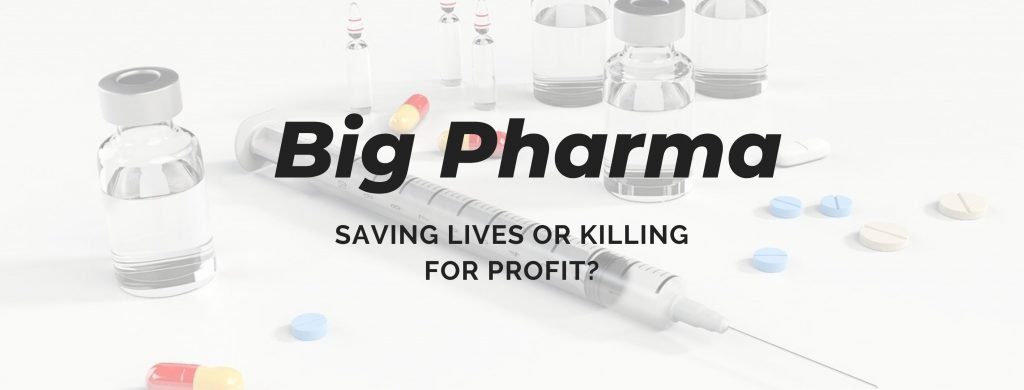

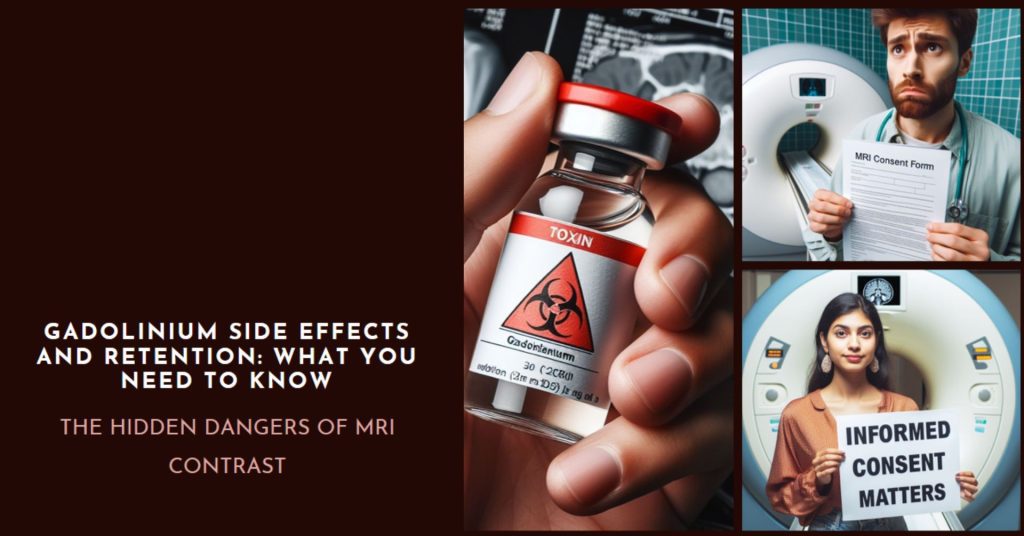


This conflict of interest involving doctors prescribing drugs for patients but then getting a percentage of the price of those drugs, has been around at least since about 1830, according to the historical novel ‘Middlemarch’, written by George Eliot about 1880.
It’s so shocking though. Such a conflict of interests.